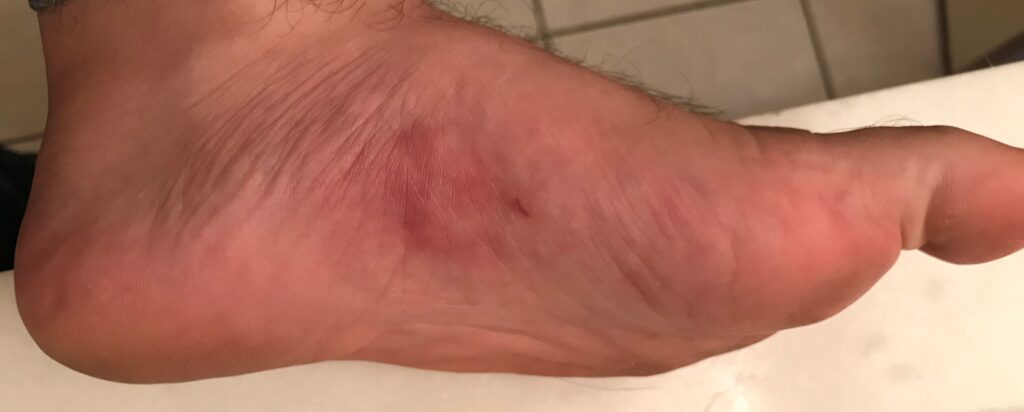
The California coast has an abundance of marine life, however one of the more commonly seen injuries is that of the infamous sting ray. Sting rays tend to bury themselves in the sand in shallow water and can ruin your day if you step on them. Surfers will often shuffle their feet to avoid stepping on them. The above foot belongs to our program director Dr. Joshua Snodgrass. He made the executive decision to incorporate some wilderness medicine topics into the didactics after stepping on one while surfing in Huntington Beach.
For those applicants who have never been around the ocean, it is important to understand types of injuries one might see in the surrounding community. Sting rays are not aggressive, they sting in self defense. They have a serrated barb on their tail that can inject a protein which causes excruciating pain if left untreated. This toxin will eventually degrade over time, but can take upwards of 10+ hours. Soaking the wound in hot water can alleviate the pain almost instantaneously.
In the summer time it is not uncommon for lifeguards to treat 100+ stings per day. Post injury treatment is mainly based on pain control and infection prevention. The name “Reggie” was given to stingrays by the Bolsa Chica 16.5 surf club. They have a tradition of flying a giant stingray kite (Reggie) when one of their members is stung to warn everyone that Reggie is lurking in the shallows. If you venture out to the Bolsa Chica area and see the kite, make sure to shuffle your feet.